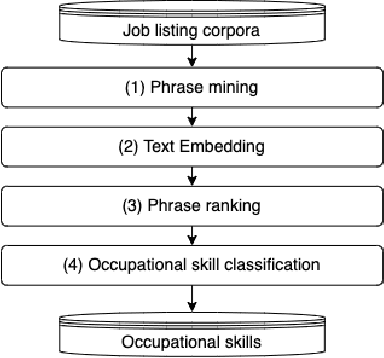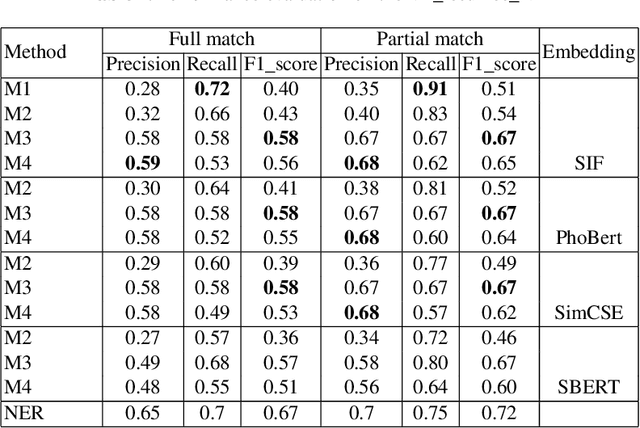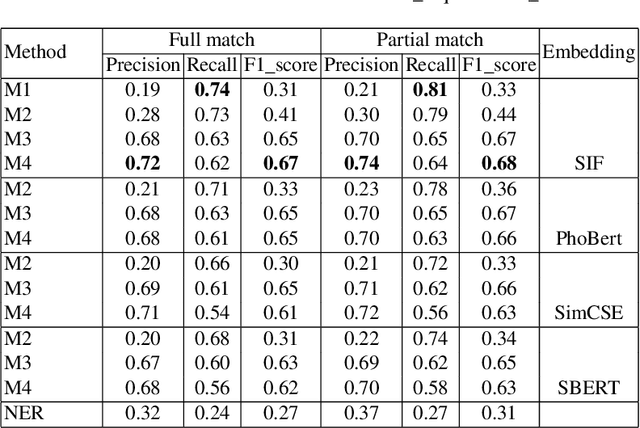Viet-Trung Tran
A practical method for occupational skills detection in Vietnamese job listings
Oct 26, 2022


Abstract:Vietnamese labor market has been under an imbalanced development. The number of university graduates is growing, but so is the unemployment rate. This situation is often caused by the lack of accurate and timely labor market information, which leads to skill miss-matches between worker supply and the actual market demands. To build a data monitoring and analytic platform for the labor market, one of the main challenges is to be able to automatically detect occupational skills from labor-related data, such as resumes and job listings. Traditional approaches rely on existing taxonomy and/or large annotated data to build Named Entity Recognition (NER) models. They are expensive and require huge manual efforts. In this paper, we propose a practical methodology for skill detection in Vietnamese job listings. Rather than viewing the task as a NER task, we consider the task as a ranking problem. We propose a pipeline in which phrases are first extracted and ranked in semantic similarity with the phrases' contexts. Then we employ a final classification to detect skill phrases. We collected three datasets and conducted extensive experiments. The results demonstrated that our methodology achieved better performance than a NER model in scarce datasets.
Machine Translation between Vietnamese and English: an Empirical Study
Oct 30, 2018



Abstract:Machine translation is shifting to an end-to-end approach based on deep neural networks. The state of the art achieves impressive results for popular language pairs such as English - French or English - Chinese. However for English - Vietnamese the shortage of parallel corpora and expensive hyper-parameter search present practical challenges to neural-based approaches. This paper highlights our efforts on improving English-Vietnamese translations in two directions: (1) Building the largest open Vietnamese - English corpus to date, and (2) Extensive experiments with the latest neural models to achieve the highest BLEU scores. Our experiments provide practical examples of effectively employing different neural machine translation models with low-resource language pairs.
 Add to Chrome
Add to Chrome Add to Firefox
Add to Firefox Add to Edge
Add to Edge